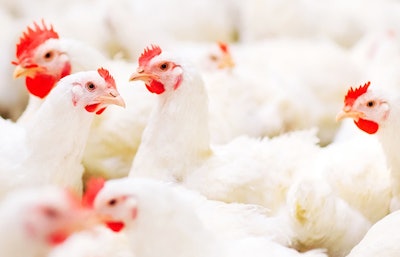
It’s time to reject the established dogmas surrounding highly pathogenic avian influenza, according to a leading voice on the subject.
At PEAK 2023 in Minneapolis, Dr. Carol Cardona, Pomeroy chair in avian health for the University of Minnesota College of Veterinary Medicine, spoke about the past and future of the virus on April 13. PEAK is presented by the Midwest Poultry Federation.
What’s next?
The current highly pathogenic avian influenza (HPAI) outbreak is different than the 2014-15 experience in that only a small percentage of cases are being spread laterally, or from farm to farm. Rather, the majority are being spread by wild birds.
She said its becoming clear HPAI is endemic in wild bird populations. The industry will need to find a biosecurity solution for wild bird introduction the same way it did for lateral spread in the past decade.
Thus, in 2023, she expects to see outbreaks in the spring and fall. This follows the past pattern. Again, the outbreaks will be focused on the northern states.
However, there should be a reduced viral load because wild bird populations are starting to develop their own HPAI antibodies and are shedding less virus.
Along with the birds developing resistance, the virus will evolve and likely develop new strains with new capabilities and different transmissibility profiles.
“Flu viruses are very inventive,” Cardona said. “We can see new species infected. And we can see changes in clinical signs.”
Vaccination
Cardona pointed to the example of the Italian poultry industry, which vaccinated commercial birds against HPAI H7N1 during a 1999-2001 outbreak in the country, as an example of how vaccination could work in the U.S.
Vaccination comes with pros and cons, she said. The positives include preventing the spread of HPAI between flocks by reducing the transmissibility of the disease to other birds and other species.
The cons included the cost of surveillance associated with a so-called DIVA, or differentiating between infected and vaccinated animals, vaccine strategy. She also mentioned the lack of available HPAI vaccines in the U.S. and the likelihood of losing some trading partners strictly due to vaccinating.
She said its time to reassess the dogmas upon which trade agreements are built. Its nearly impossible to prove the 100% absence of anything from a product so numerous as poultry and eggs, so instead the trade world should start looking at establishing risk thresholds. A risk threshold, she said, would allow inspection of a small quantity of a commodity to establish confidence in the entire supply.
Rather than thinking about zero virus in trade, she said, the focus should be on negligible risk.
Biosecurity assessment
The nature of HPAI spread in 2022 demonstrated there’s a need to modify the biosecurity of existing poultry operations to prevent introductions. Moreover, the industry should continue to expand its role in disease response and control.
Growers should have a site-specific disease response plan in place. If one isn’t in place, look to the integrator and the state veterinarian’s office for guidance. Response and control will play a larger part of biosecurity going forward.
Responsible response
A concept created in the past in response to low pathogenic avian influenza, responsible response, is applicable now.
Cardona said the concept is: When you see something, take the responsibility to stop spreading the disease or doing the things that would spread it further.
Keep the disease on the farm when it breaks out. Get a diagnosis and cooperate with the authorities. Be a good neighbor to stop outbreaks before they spread.
Management dilution
As a final thought, Cardona cautioned against a complete focus on HPAI at the expense of the management of other disease risks on the farm.
This, she called it, management dilution is when the pre-occupation on one urgent project causes managers and employees to neglect other tasks.


















